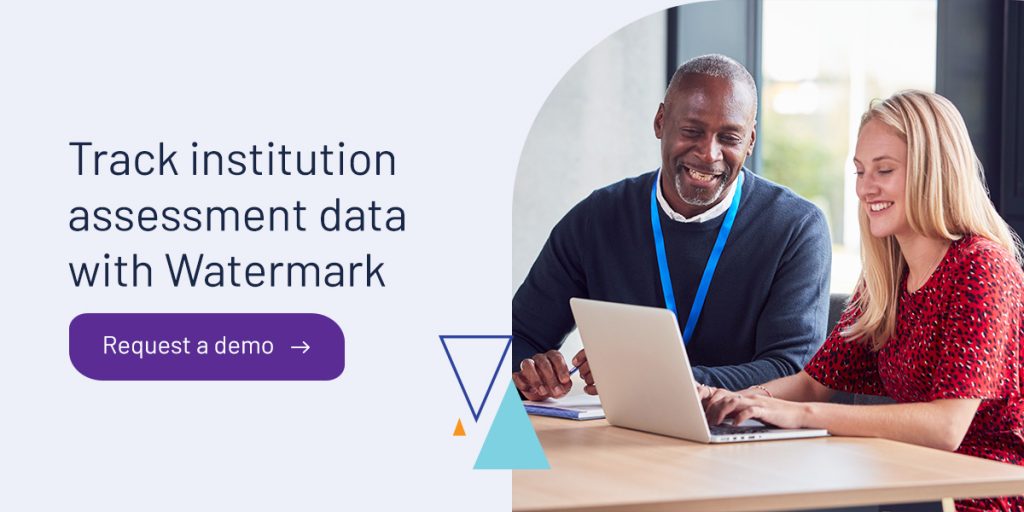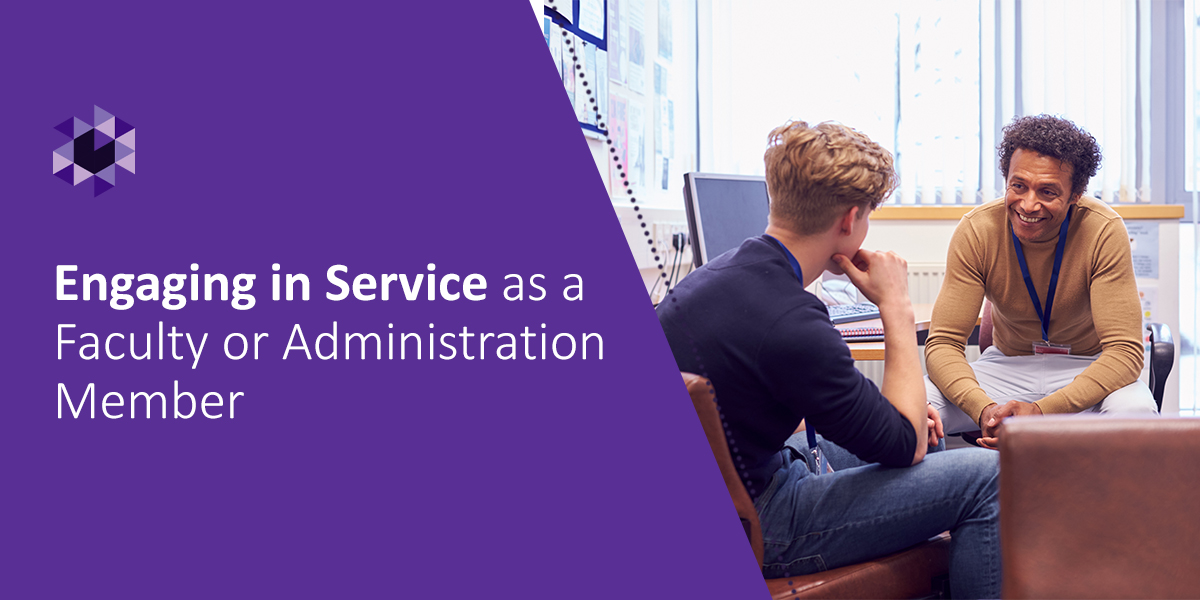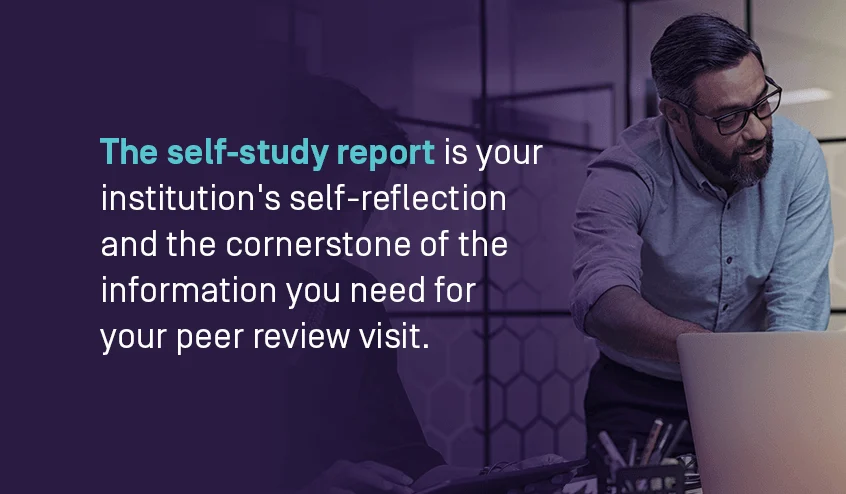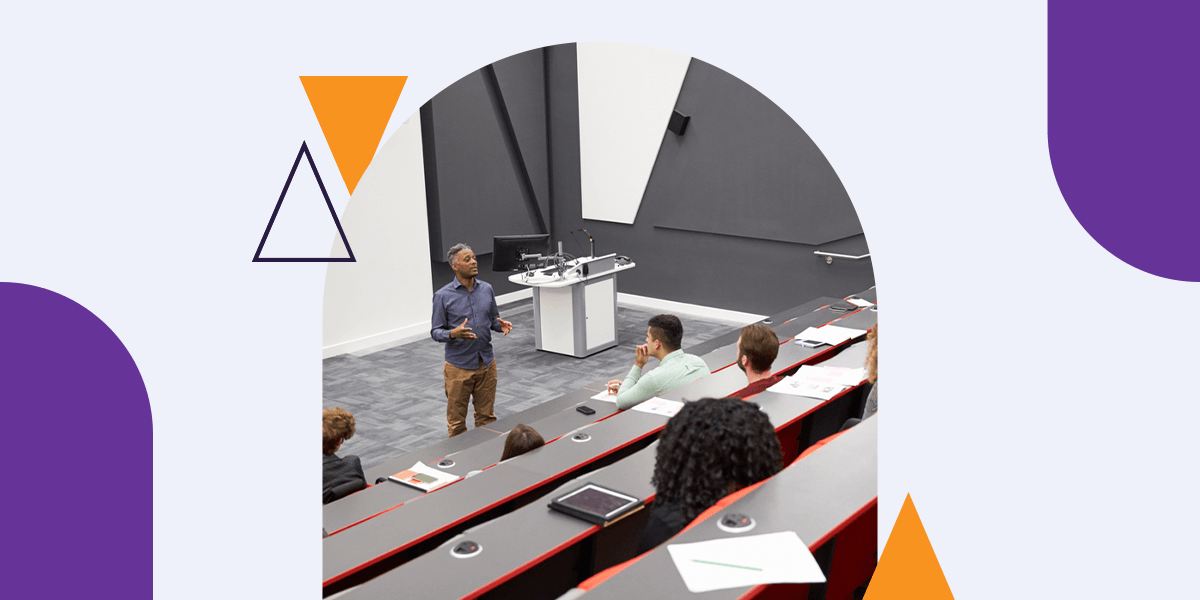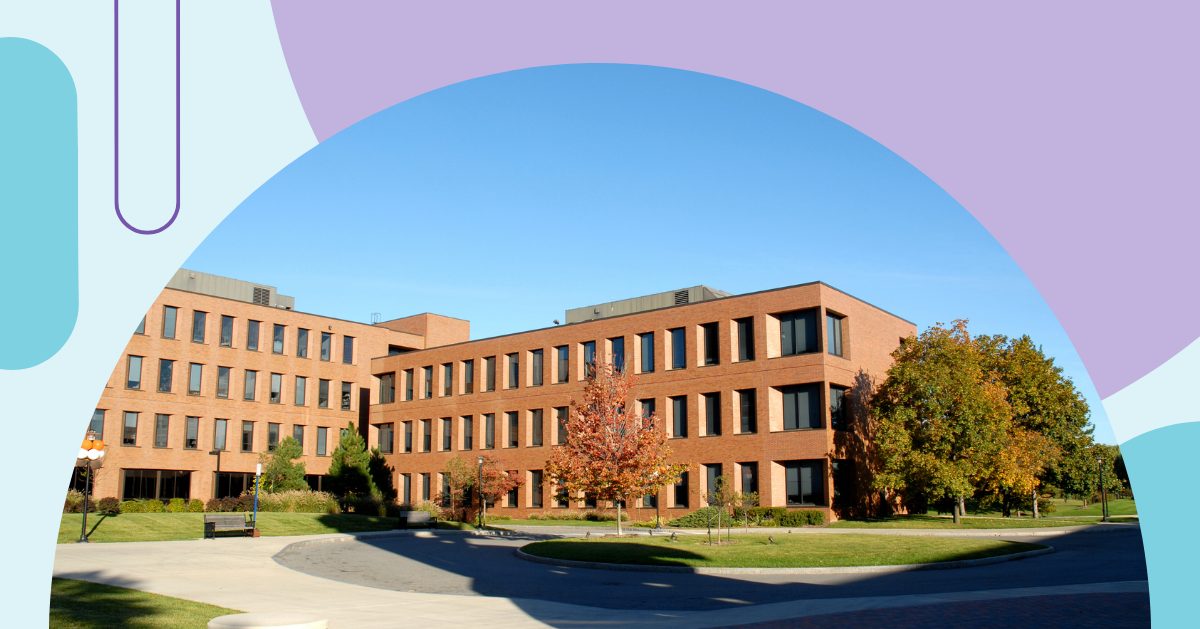
A college advisory board includes a group of people who provide expertise, guidance, and support to a college. They bridge your institution to the broader community, such as alumni, stakeholders, and various industries. Their goal is to align the institution with community needs, professional standards, and industry trends.
An effective advisory board can fulfill these responsibilities by offering strategic guidance, creating networking opportunities, and assisting with resource development. Is your college advisory board fulfilling these purposes? Do they have the correct responsibilities, strategies, and resources to do so? Read this guide to understand the importance of using assessment data to inform and strengthen industry advisory boards. We’ll also share a few strategies for building more effective advisory boards with institutional assessment data.
The importance of using assessment data to inform advisory boards
Meaningful assessment data equips advisory boards with information about institutional performance and student learning metrics. This information enables them to develop strategies that enhance institutional success. Let’s look at four more reasons why it’s important for advisory boards to use assessment data.
Data-driven decision-making
When advisory boards have access to accurate assessment data, they can make data-informed and evidence-based recommendations. It helps them identify specific institutional needs and make important decisions about program effectiveness, strategic priorities, and curriculum relevance.
For example, consider Lightcast, a labor market analytics firm that projected 6,454 job openings per year for registered nurses in Los Angeles until 2035. However, degree completion data showed that local colleges only produced 5,363 graduates with relevant degrees. This type of information could show that colleges need to improve their retention strategies and enrollment rates.
Enhanced credibility
Using robust assessment data to inform college decisions builds the institution’s reputation for a commitment to quality and continuous improvement. Transparency about challenges also demonstrates institutional integrity and accountability. This is only possible when you have representatives on the advisory team who know how to interpret data accurately.
Targeted curriculum and program improvements
Assessment data allow advisory boards to identify gaps between institutional outcomes and industry needs, suggest targeted curriculum adjustments based on student performance data, and recommend technical education partnerships to address specific learning challenges.
Improved resource development and fundraising support
Advisory boards become more effective advocates for resource development when they use assessment data. They can identify funding priorities, find potential donors who are likely to support initiatives, and build credible grant applications.
What assessment data can inform advisory boards?
See these types of assessment data that college advisory committees analyze to determine an institution’s needs:
- Student learning outcomes: These assessment data consist of student portfolios, competency assessments, project evaluations, and certification or licensure exam results. These scores and results demonstrate a student’s skills and knowledge developed from programs and curricula.
- Program performance: Some program-level metrics that assess a program’s overall effectiveness include retention rates, completion rates, enrollment trends, course success rates, and time-to-degree metrics.
- Labor market and employment data: Industry representatives on advisory boards may consider post-completion outcomes such as job placement rates, employer satisfaction, alumni career progression, and return on investment (ROI) metrics.
- Facilities and equipment assessment: Advisory boards evaluate technology relevance reports, inventory and condition reports, and safety audit results to ensure they match industry standards and program needs.
- Curriculum review data: To ensure a curriculum is relevant to the current industry, boards examine workforce alignment metrics, skills gaps, accreditation requirements, and industry trends research.
- Student and stakeholder feedback: Advisory boards also consider feedback from various sources, including student satisfaction surveys, employer interviews, course evaluations, stakeholder insights, and alumni surveys.
How to use institution assessment data to build smarter advisory boards
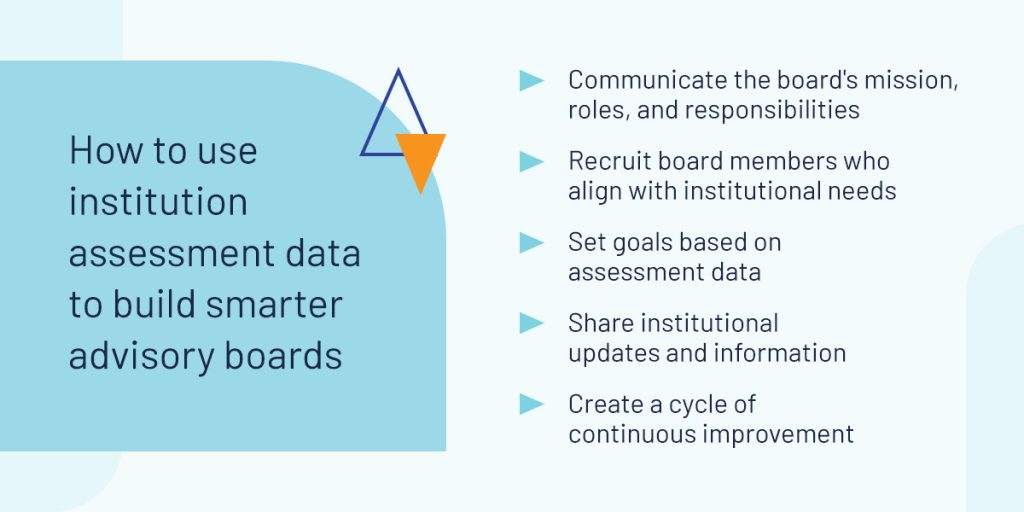
Explore how to build an advisory board that knows how to use institutional assessment data with these five strategies.
1. Communicate the board’s mission, roles, and responsibilities
Create a clear explanation of the board’s mission in an organizational document. Advisory board members should understand that they are advisory in nature and do not have governing authority. Outline their roles and responsibilities in job descriptions and ensure they provide a signature of understanding. When board members understand their role, they are more likely to make decisions with the right goals in mind. Their key duties include:
- Staying informed about the latest assessment data
- Identifying and recommending opportunities that address employment and institutional needs
- Assessing the currency of teaching and curriculum practices
- Serving as an advocate of college programs and a communication link between institutions and the community
2. Recruit board members who align with institutional needs
It’s important to recruit board members who have expertise in specific areas. Each member should include specialized subcommittees based on assessment findings. For example, it might include industry leaders whose knowledge and skills align with the institution’s needs. It can also include key local employers based on economic development data.
Real-life examples include when Los Angeles community colleges partnered with California State University, Northridge, to allow students earning nursing associate degrees to earn a Bachelor of Science in Nursing degree. This initiative helps tackle the local nursing shortage.
Conduct an industry advisory assessment to analyze labor market data and industry gaps to identify emerging sectors and hire board members from those areas. With workforce demographic data, you can ensure your board reflects industry and community diversity.
3. Set goals based on assessment data
Advisory members should sit with stakeholders to explain assessment findings and create specific, measurable, achievable, realistic, and time-bound (SMART) goals. These goals should form your institution’s priorities and general successes it should focus on. The goal should relate to the identified assessment needs.
Assign skilled and knowledgeable representatives to each goal. They should be able to develop effective strategies and address assessment-identified gaps. Define a clear outcome that will allow you to measure progress and identify improvement opportunities.
4. Share institutional updates and information
Create purposeful meeting agendas with talking points that align with the institution’s strategic priorities. Advisory board members should share new assessment data at these meetings to demonstrate board impacts and communicate how their strategies affected the outcomes.
Board meeting agendas should balance important institutional updates with using the board’s expertise to provide feedback and advice on certain issues. You can do so by sharing pre-meeting briefings and assessment data packages before meetings.
5. Create a cycle of continuous improvement
Encourage your advisory board to help the institution create a cycle of continuous improvement. You can share program outcomes, such as graduate success metrics regarding employer satisfaction, job placement, and salaries. These metrics may help your institution attract more prospective students. You can also use industry certification pass rates to identify gaps in preparation.
Track institution assessment data with Watermark
It takes a smart advisory team to track assessment data and use it efficiently to build institutional success. You can make their jobs easier and attract the right industry partners by implementing an effective assessment software.
Watermark Assessment Projects is a specialized software solution that helps institutions identify program improvement areas. Our software provides meaningful metrics when assigned clear priorities, monitors progress, and analyzes results with interactive reports. For current and accurate assessment data, request a demo with Watermark today.
